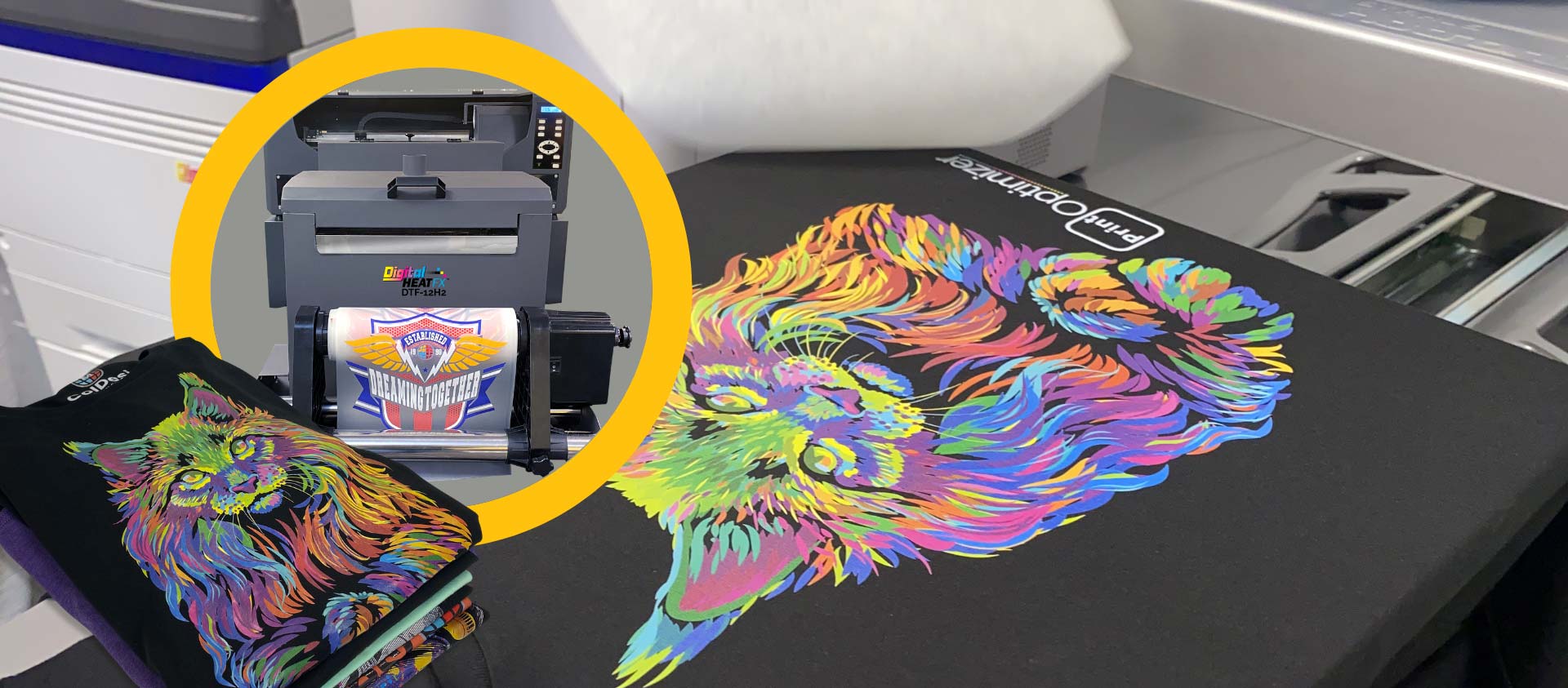Past Essentials: DTF Printing Techniques for Exceptional Fabric Creations
Past Essentials: DTF Printing Techniques for Exceptional Fabric Creations
Blog Article
Understanding DTF Printing: Idea for Getting Vibrant and Resilient Prints
Worldwide of textile printing, attaining vibrant and sturdy prints is a desirable skill that can elevate the top quality of your result. Grasping DTF (Direct to Film) printing requires a blend of technological understanding, accuracy, and interest to detail. From choosing the appropriate materials to fine-tuning print setups and developing post-printing finishing techniques, there are countless factors that can affect the end result of your prints. Recognizing exactly how to navigate these details can make all the distinction between an average result and a truly extraordinary one.

DTF Printing Basics
For those brand-new to the globe of fabric printing, recognizing the principles of DTF printing is necessary to mastering this cutting-edge strategy. Straight to Movie (DTF) printing is a contemporary technique that entails moving designs from an unique movie onto various textiles utilizing a warmth press. Unlike conventional techniques like display printing, DTF supplies advantages such as vivid colors, complex detailing, and the capability to publish on diverse products like cotton, polyester, and blends.
The procedure begins by publishing the design on a special DTF film using a suitable printer with CMYK or CMYKW ink sets. Once the style is printed, it is after that cured with a warm press to create a sturdy and resilient print. DTF printing is known for its capacity to recreate intricate styles with high accuracy and color precision, making it a prominent choice for businesses seeking to create personalized apparel, marketing items, and more.
Picking the Right Materials

The sticky powder acts as a bonding representative in between the printed layout and the material, so it has to have strong bond residential or commercial properties to make sure a lasting and durable transfer. By meticulously choosing the best materials for DTF printing, printers can enhance the quality, vibrancy, and longevity of their prints.
Optimizing Publish Settings
When aiming to attain the finest results in DTF printing, meticulous interest to maximizing print setups is vital for making certain accurate and top quality transfers onto fabrics. One key element to consider when enhancing print settings is the resolution.
While increasing the speed can enhance effectiveness, it may jeopardize the last print's clarity and shade saturation. Trying out with various speeds and observing the results can aid figure out the ideal setting for each print work.
In addition, make improvements shade accounts and making sure appropriate color administration are necessary for attaining constant and precise colors throughout various prints. By adjusting shade setups and profiles, printers can reduce color inconsistencies and generate consistent results, enhancing the general print top quality and customer satisfaction.
Preparing Artwork for DTF Printing
To guarantee optimum cause DTF printing, thorough attention to information is essential when preparing artwork for transfer onto textiles. Begin by picking high-resolution images to keep clearness and intensity in the final print. Vector graphics are preferred as they can be quickly scaled without losing high quality. Convert the art work to CMYK color mode to ensure that the shades translate precisely from display to print. Change the shade levels and contrast as required to improve the vibrancy of the style. When adding text to the art work, select font styles that are clear and ideal for the intended size. Remember to mirror the last design prior to printing to guarantee that it transfers correctly onto the garment. In addition, consider the textile kind and color when choosing the artwork, as these variables can impact the final appearance. By adhering to these actions and paying close interest to the information, you can prepare artwork that is optimized for dynamic and durable DTF prints.
Post-Printing Finishing Strategies
Carrying out efficient post-printing completing methods is critical to boosting the durability and aesthetic charm of DTF prints on textiles. Once the printing process is complete, applying warmth to the published style is vital.
After warm pressing, peeling off the PET film carefully is more a critical action. This process should be done gradually and steadily to avoid any damage to the print. As soon as the film is removed, the print might require added treating time to better establish the ink right into the material. This action assists boost the washability and longevity of the print, ensuring it can hold up against several clean cycles without fading or splitting.
Furthermore, trimming any kind of excess movie around the design can offer the final print a specialist and clean look. Taking the time to correctly complete DTF prints post-printing can considerably influence the general quality and long life of the fabric design.

Verdict
Finally, mastering DTF printing calls for a thorough understanding of the basics, picking ideal products, maximizing print settings, preparing art work efficiently, and using post-printing finishing methods. By adhering to these methods and tips, one can accomplish long lasting and vivid prints that fulfill their desired quality requirements. Consistent practice and attention to information are essential in achieving successful useful content end results in DTF printing.
From picking the appropriate products to fine-tuning print setups and perfecting post-printing finishing strategies, there are numerous factors that can affect the end result of your prints. Unlike typical approaches like display printing, DTF uses advantages such as dynamic colors, intricate detailing, and the ability to print on diverse materials like cotton, polyester, and blends.
When the design is printed, it is then cured with a heat press to create a resilient and lasting print.When aiming to accomplish the finest results in DTF printing, precise interest to maximizing print settings is vital for ensuring accurate and top notch transfers onto fabrics.In verdict, grasping DTF printing requires an extensive understanding of the fundamentals, choosing informative post proper materials, enhancing print settings, preparing art work effectively, and utilizing post-printing finishing techniques.
Report this page